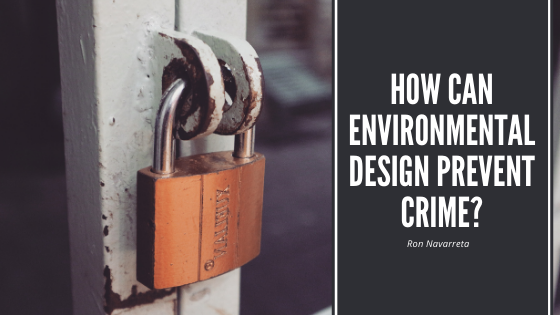Typically, when one imagines crime prevention measures, one will think of secure locks, closed windows, and a security system. However, there’s more than one way to effectively reduce the likelihood of crime.
Crime prevention through environmental design (CPTED) is an effective measure used against potential threats. The goal is to use the building or property design to our advantage, making it more difficult for crime or even natural disasters to negatively impact.
There are four main principles of CPTED, natural surveillance, natural access control, territorial reinforcement, and maintenance. Together, these four principles can be used to effectively and significantly increase the security of an area.
Natural Surveillance
Natural surveillance relies on the belief that criminals do not want to be seen – or risk getting recognized. While this isn’t always a practical measure, it does have an overall positive effect on safety measures.
When designing for natural surveillance, keep a few key factors in mind. First, consider the lighting of an area. Well-lit areas are easier to see and thus more secure. Next, look around the property for any potential hiding spots and work to eliminate them. This includes low areas, such as inside shrubs or directly below windows.
Natural Access Control
Natural access control pertains to the effort to control and confine access. In other words, remove alternate forms of entry to control who may be entering the property. The goal is to channel visitors (both wanted and unwanted) through certain areas.
A decent example of this process would be the lobby of a business. Business lobbies tend to be well-lit and highly visible. Additionally, a security or receptionist desk can further reduce the flow of traffic.
Territorial Reinforcement
Territorial reinforcement sounds like a harsh or intimidating term, but it is relatively practical. The goal of territorial reinforcement is to remove any confusion about where the public property ends and private property begins.
Why? This eliminates an easy excuse for potential criminals – that they didn’t know they were on private property. Additionally, it makes those that don’t belong stand out even further, an added safety measure.
Unfortunately, this practice can become slightly more complicated in certain residential areas. For example, a block of townhouses might face additional difficulty in making clear access lines. This is where planning ahead comes into play, as site design, symbolic barriers, and even internal design can help clear any potential confusion.
Maintenance
Maintenance is the most straightforward concept in terms of CPTED. Maintenance requires the upkeep of all the above steps, especially territorial reinforcement. Areas that are well-maintained give off a certain message. They indicate a human presence, which in turn can be discouraging for criminals.

